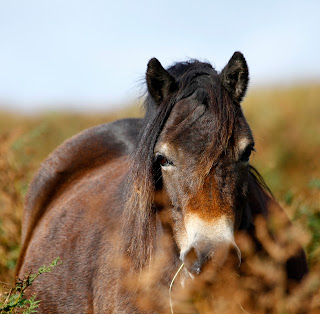The relationship between
iron and insulin sensitivity has long been recognized and studied in humans and
other animals, but largely ignored in the equine population. With the knowledge
that elevated circulating insulin is the direct and most common cause of
laminitis associated with equine metabolic disorders, the association between
equine insulin and iron dysregulation needs further investigation.
Drs. Eleanor Kellon and
Kathleen Gustafson of the Equine Cushing’s and Insulin Resistance Group (ECIR)
performed a retrospective analysis of lab results maintained in the group’s
database and data from the only controlled feeding study in horses. The latter
study was specifically designed to substitute horses as a model for captive
black rhinos, a cousin of the horse, because the researchers recognized the
relationship between metabolic disease and iron overload in rhinos (Nielsen et
al., 2012).
All animals from the ECIR
database had abnormally elevated insulin. Ferritin, a measure of body iron
stores, exceeded the published reference range in all animals and there was a
tendency for ferritin to increase with age. Likewise, data from the previously
published report showed that ferritin was significantly elevated in the group
with confirmed hyperinsulinemia when compared to the group with a normal
insulin response.
Kellon and Gustafson
suggest that these results indicate possible similar interactions between
hyperinsulinemia and body iron burden in the horse and that iron may be a
modifiable risk factor for hyperinsulinemia. They emphasize that iron is
unlikely to be a primary causal factor but that the interaction is worth
scientific investigation in controlled studies.
“Studies investigating the
bidirectional relationship between iron and hyperinsulinemia in horses are
extraordinarily limited, despite considerable scientific inquiry in other
species. Our goal is to increase awareness of the potential for iron overload
in horses with hyperinsulinemia and stimulate further study.”
For more details. See:
Possible Dysmetabolic
Hyperferritinemia in Hyperinsulinemic Horses
Eleanor M. Kellon and Kathleen M. Gustafson
Open Veterinary Journal, (2019), Vol. 9(4): 287–293
Eleanor M. Kellon and Kathleen M. Gustafson
Open Veterinary Journal, (2019), Vol. 9(4): 287–293
Nielsen, B.D., Vick, M.M.
and Dennis, P.M. 2012. A Potential Link between Insulin Resistance and Iron
Overload Disorder in Browsing Rhinoceroses Investigated through the Use of an
Equine Model. J. Zoo Wildl. Med. 43, S61–S65.
https://doi.org/10.1638/2011-0145.1
https://doi.org/10.1638/2011-0145.1
For more about the
Equine Cushing’s and Insulin Resistance Group go to https://www.ecirhorse.org/


1 comment:
This is an interesting summary. Is it possible to reduce iron overload? It's not something I've ever heard of in over 60 years of involvement with horses, including owning a horse diagnosed with Cushings and EMS.
Post a Comment